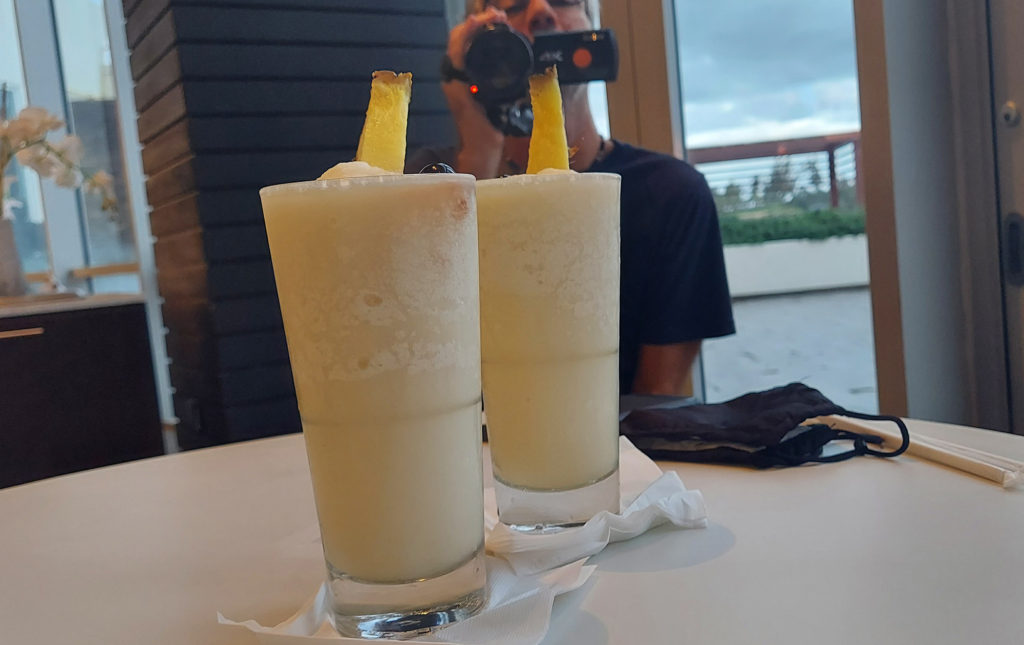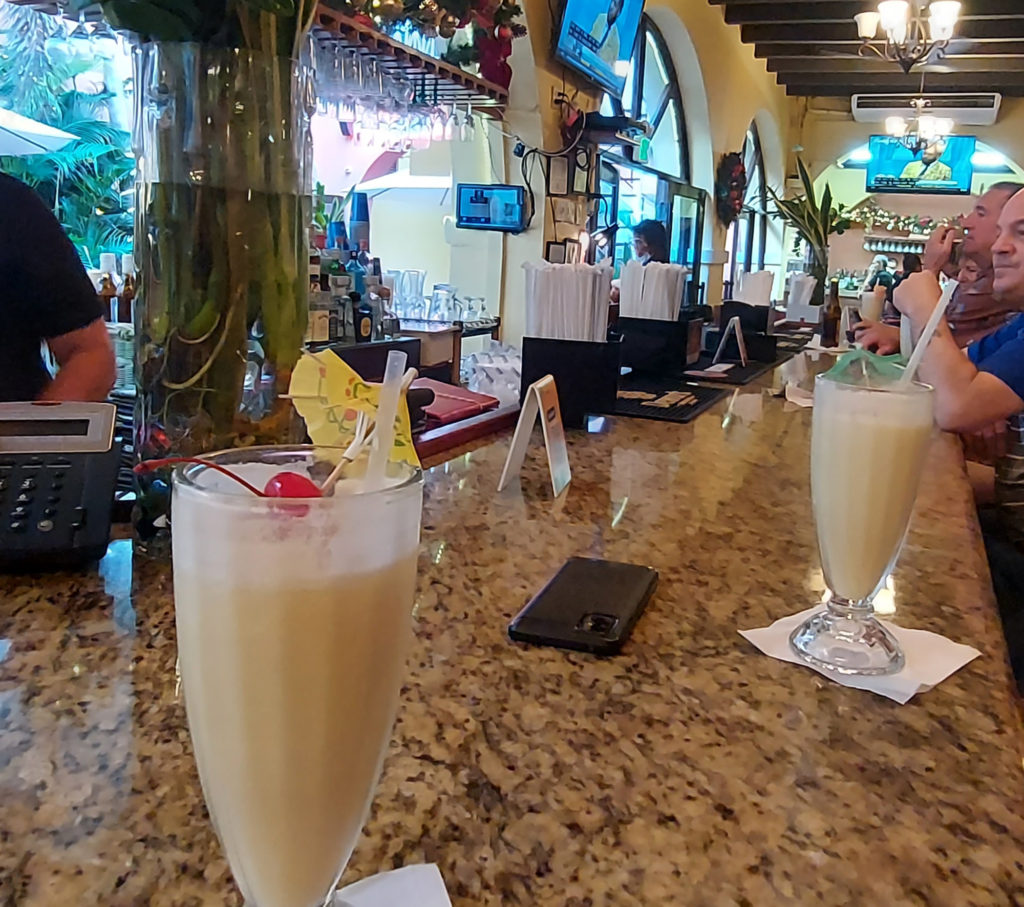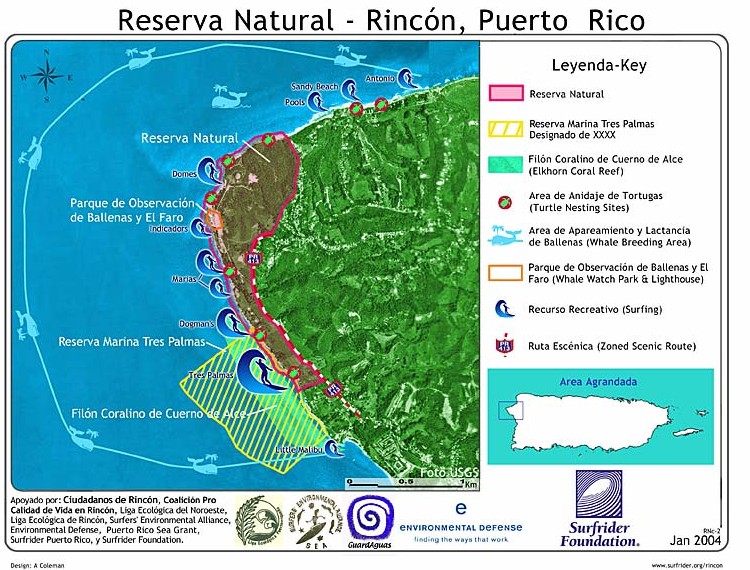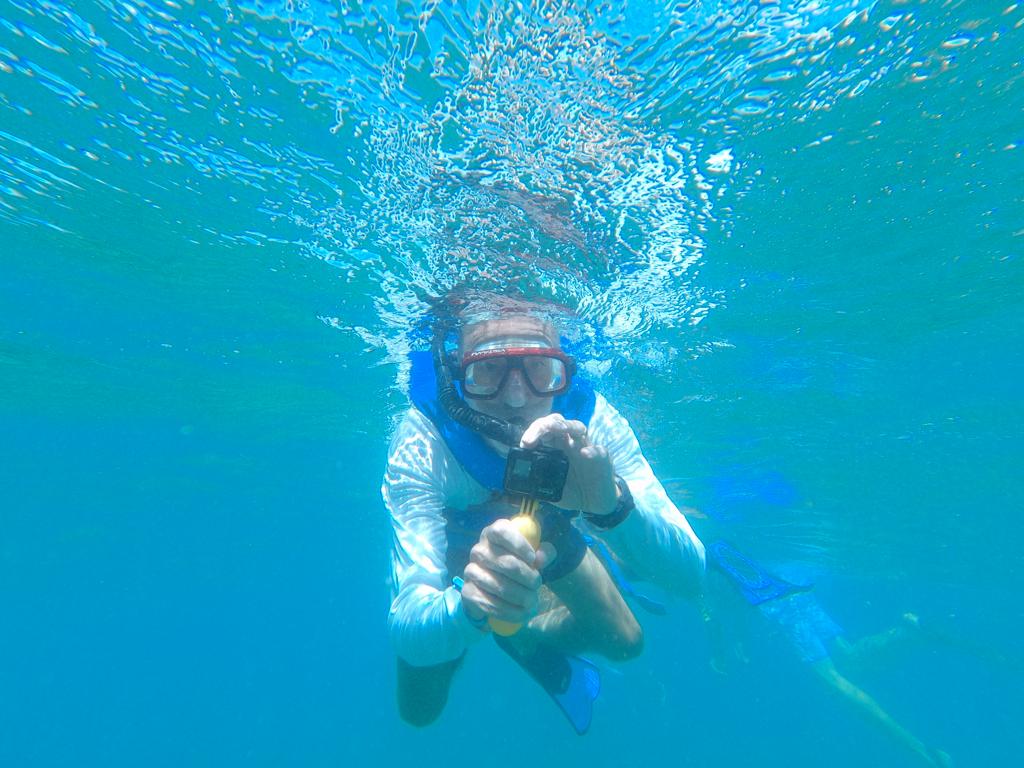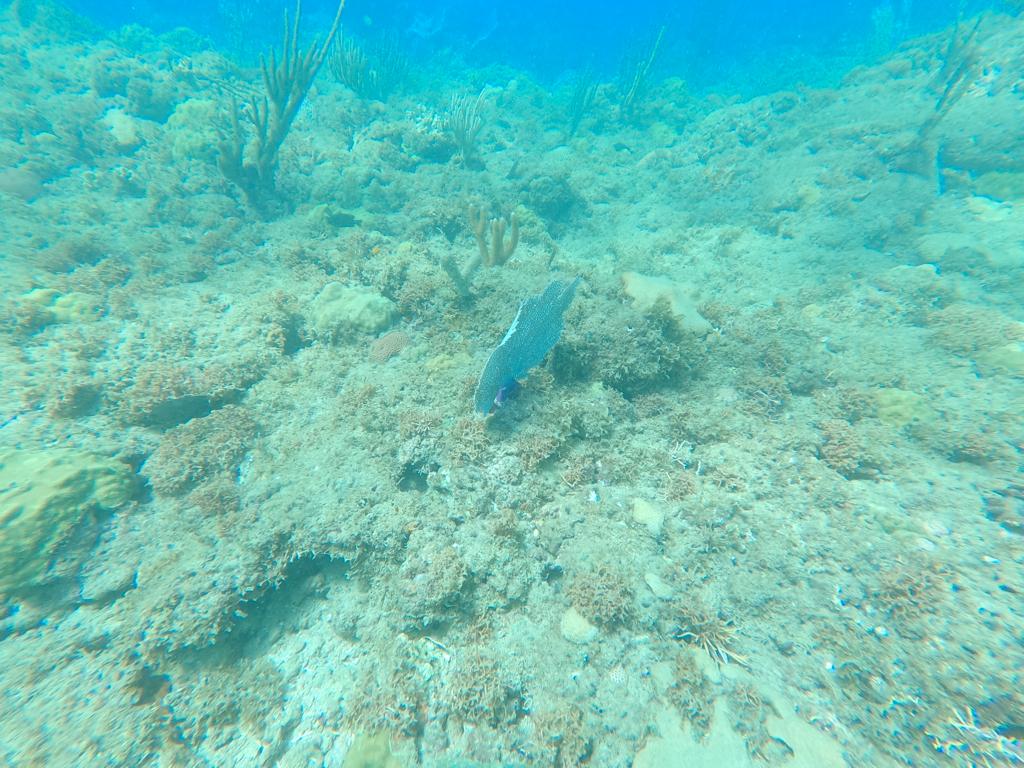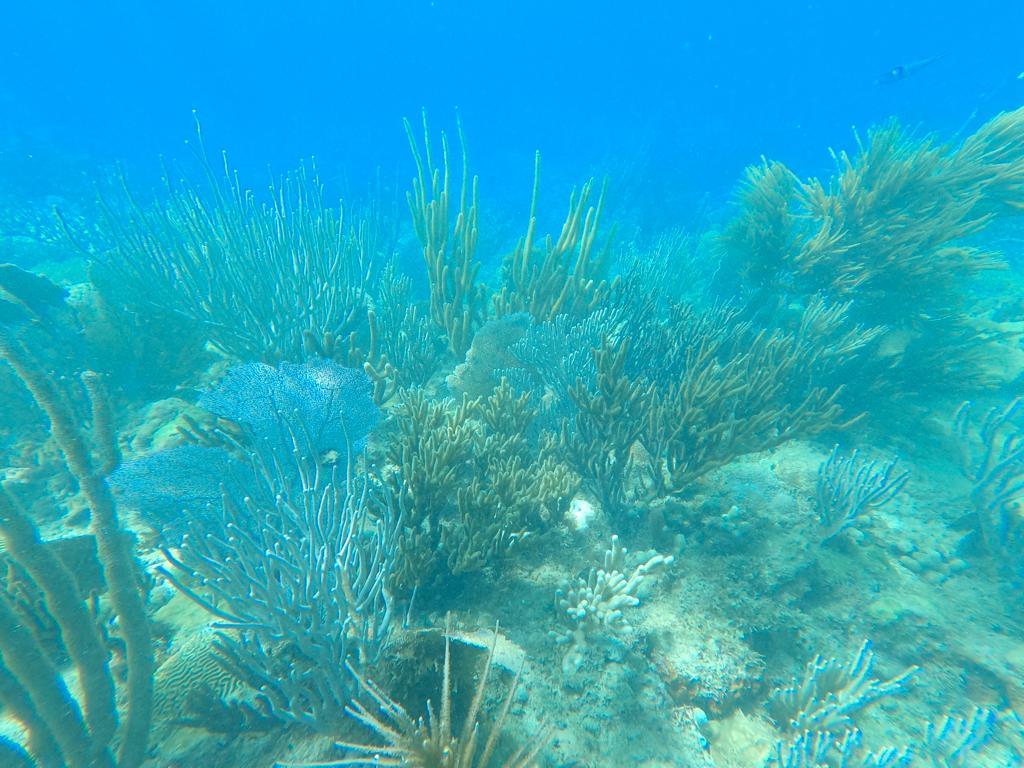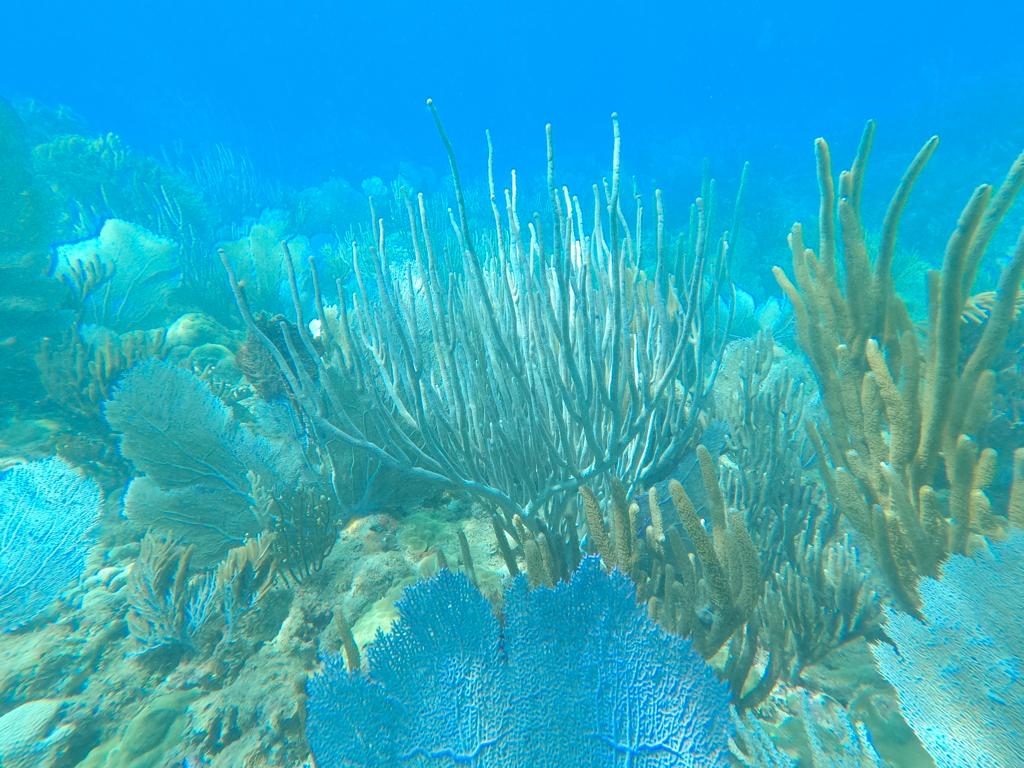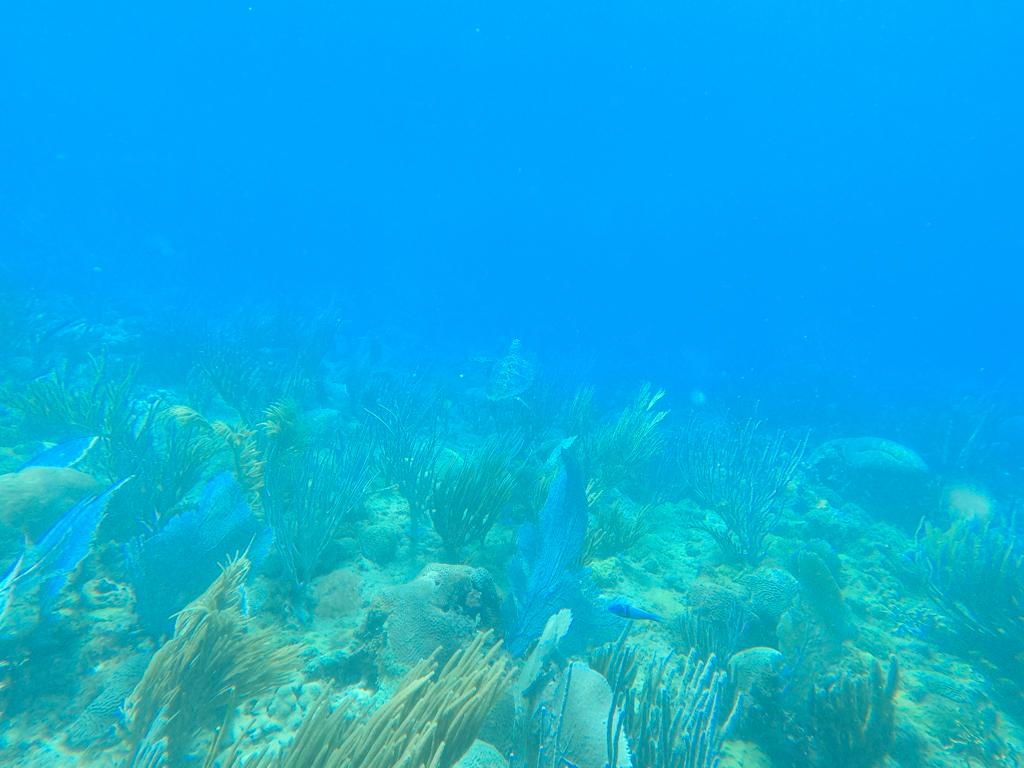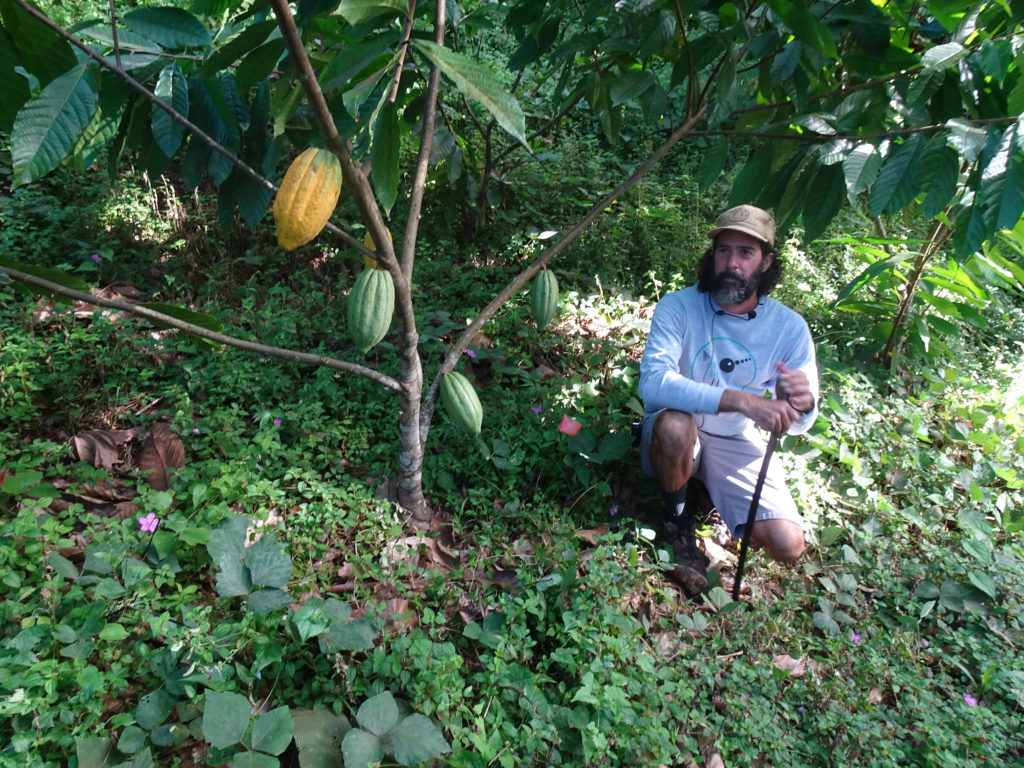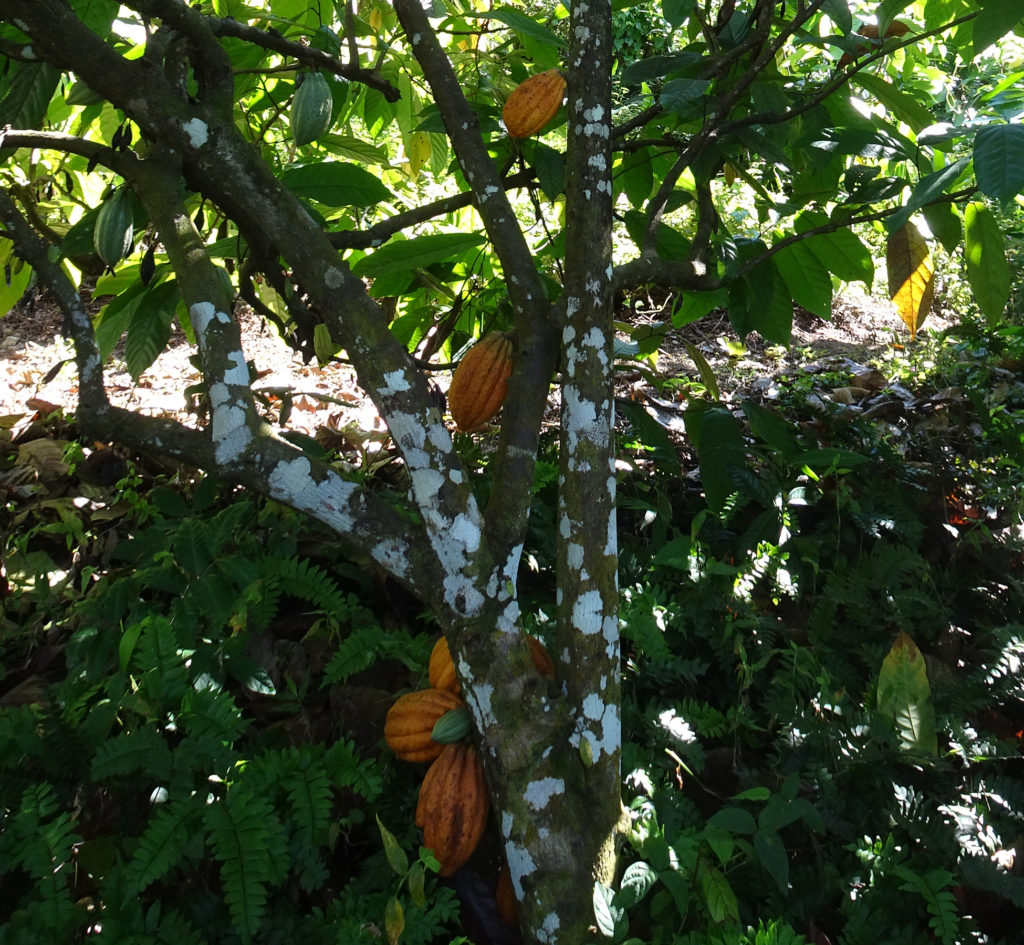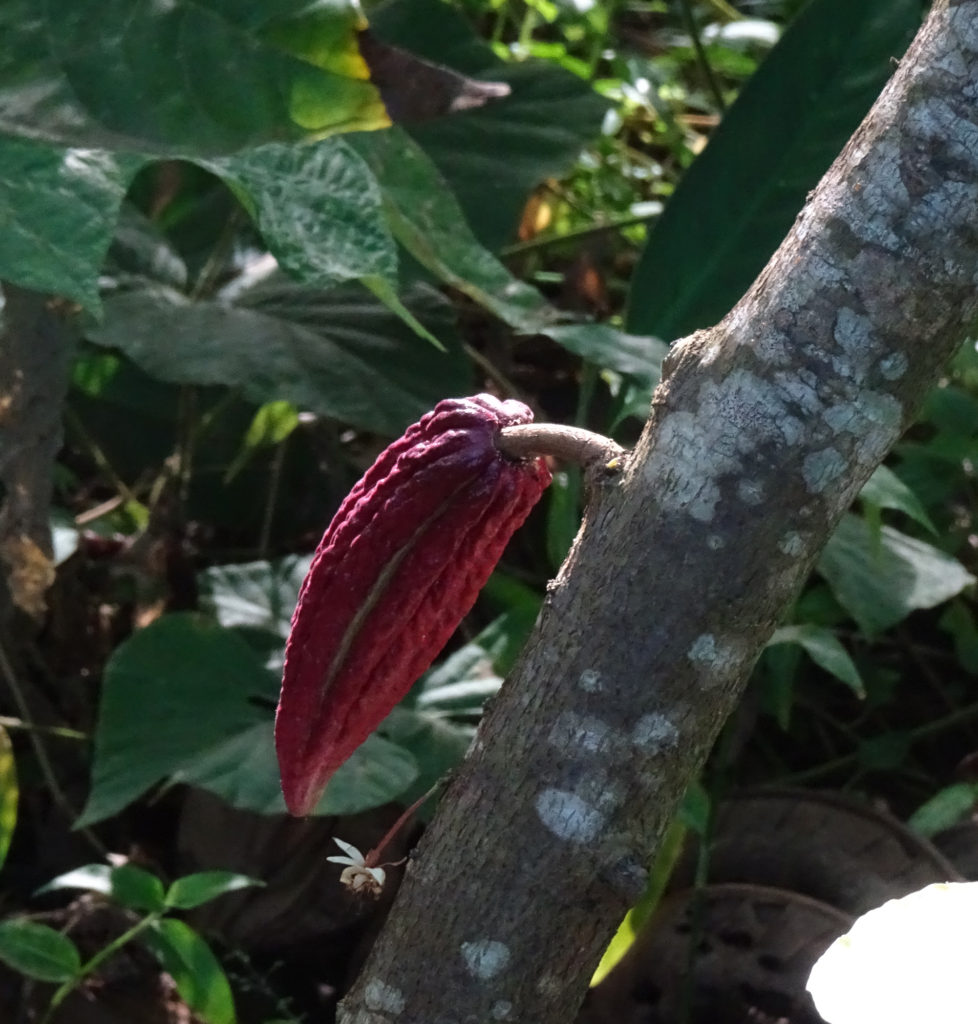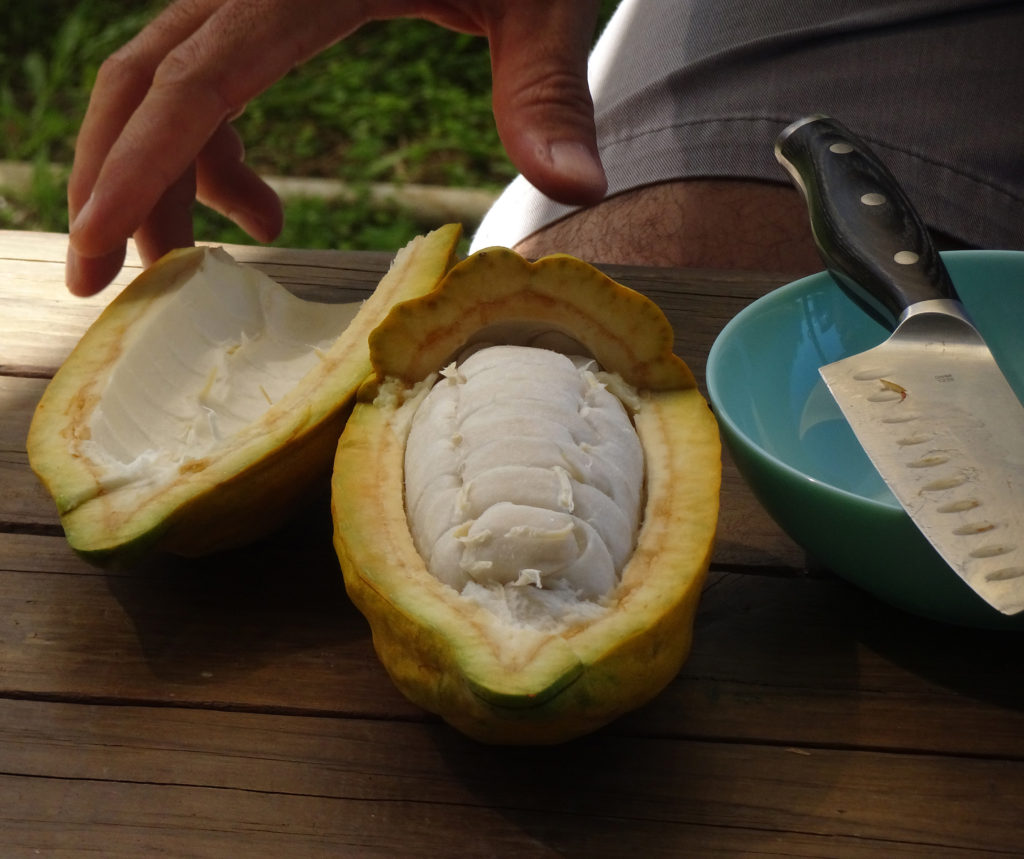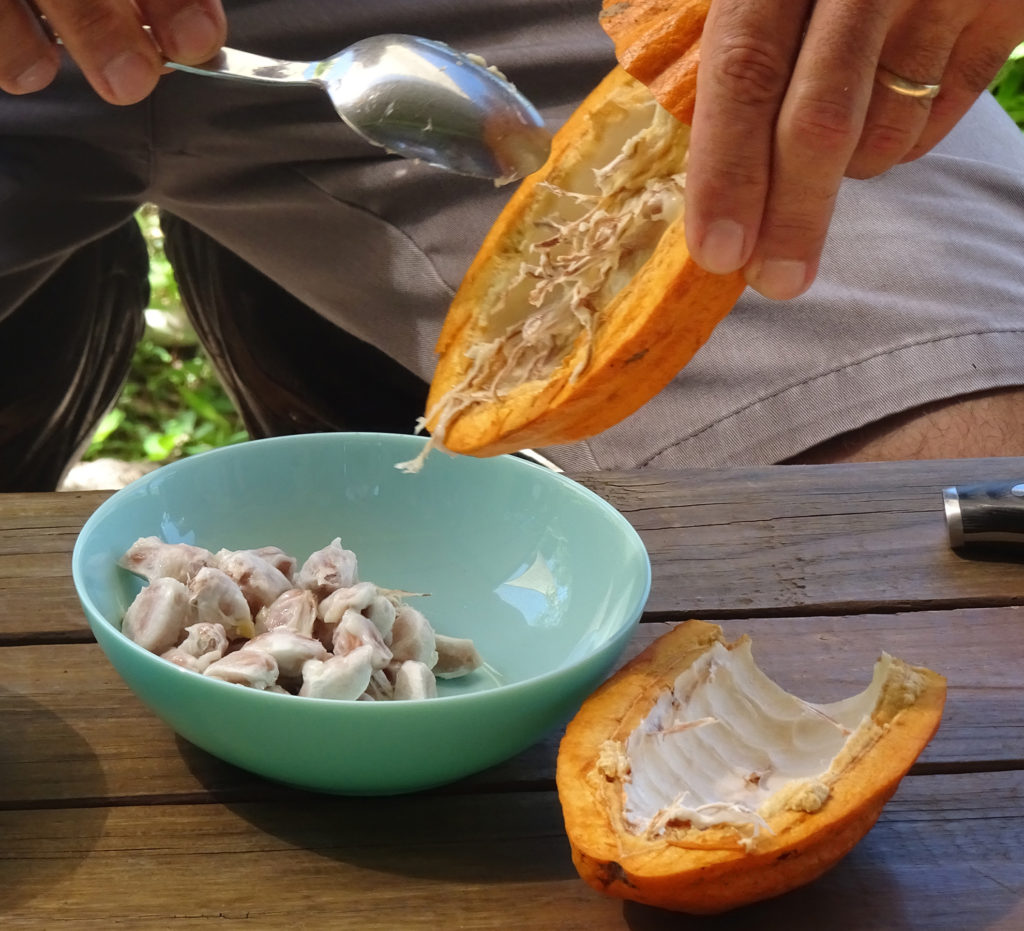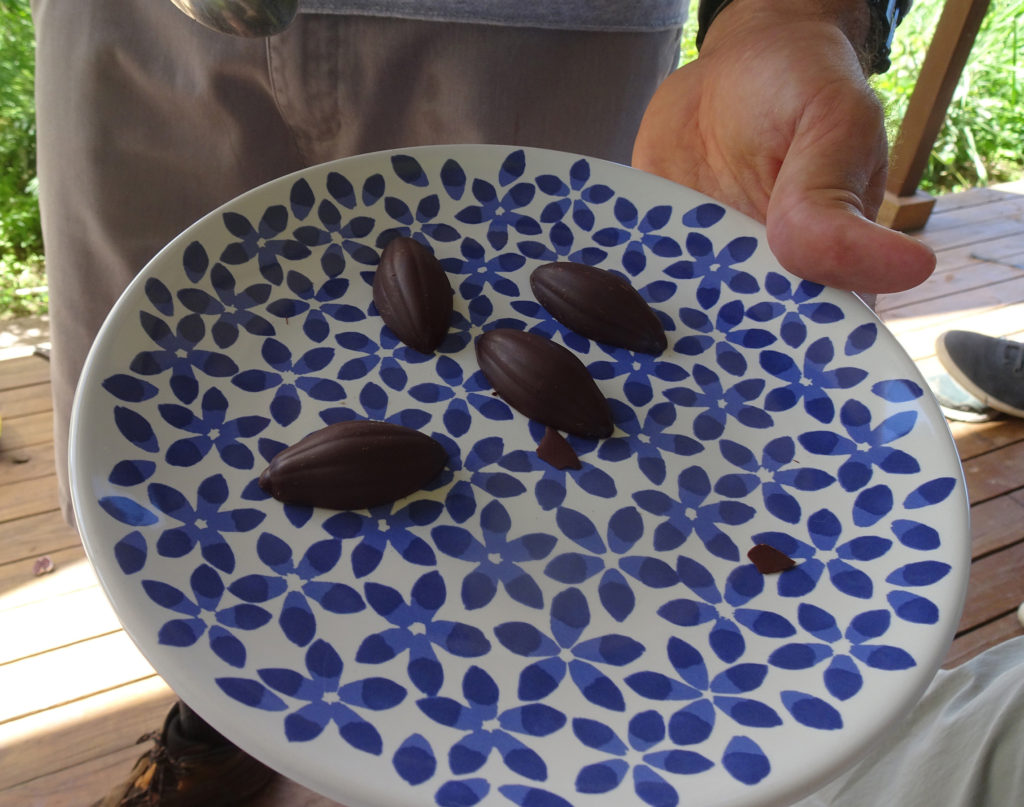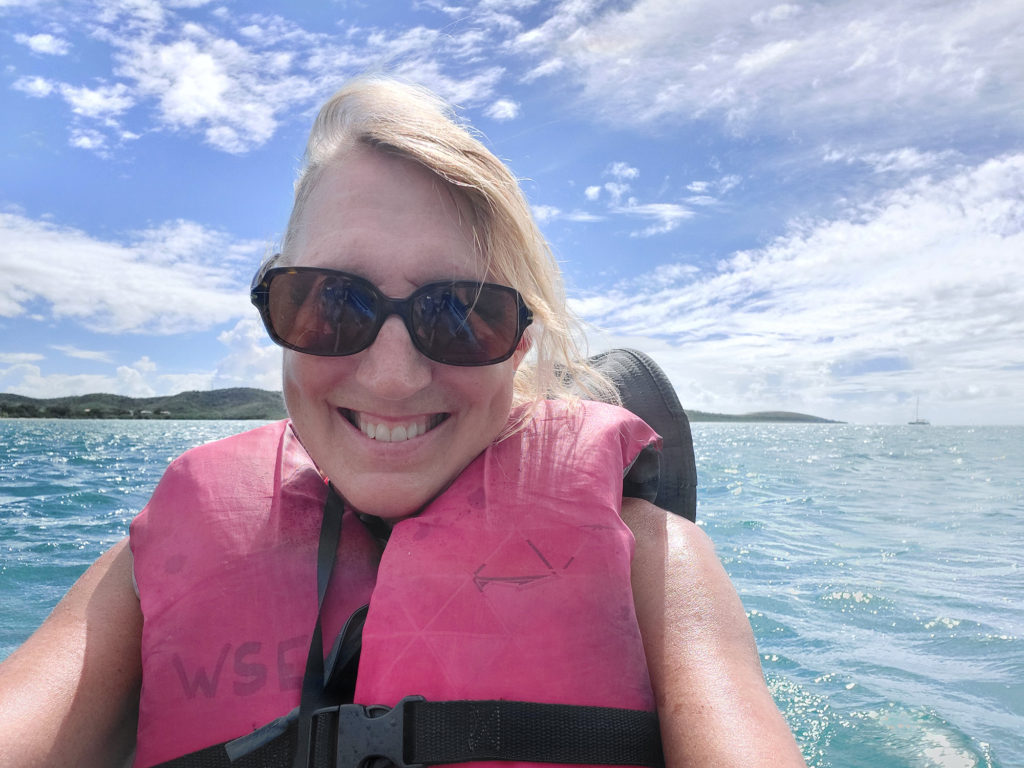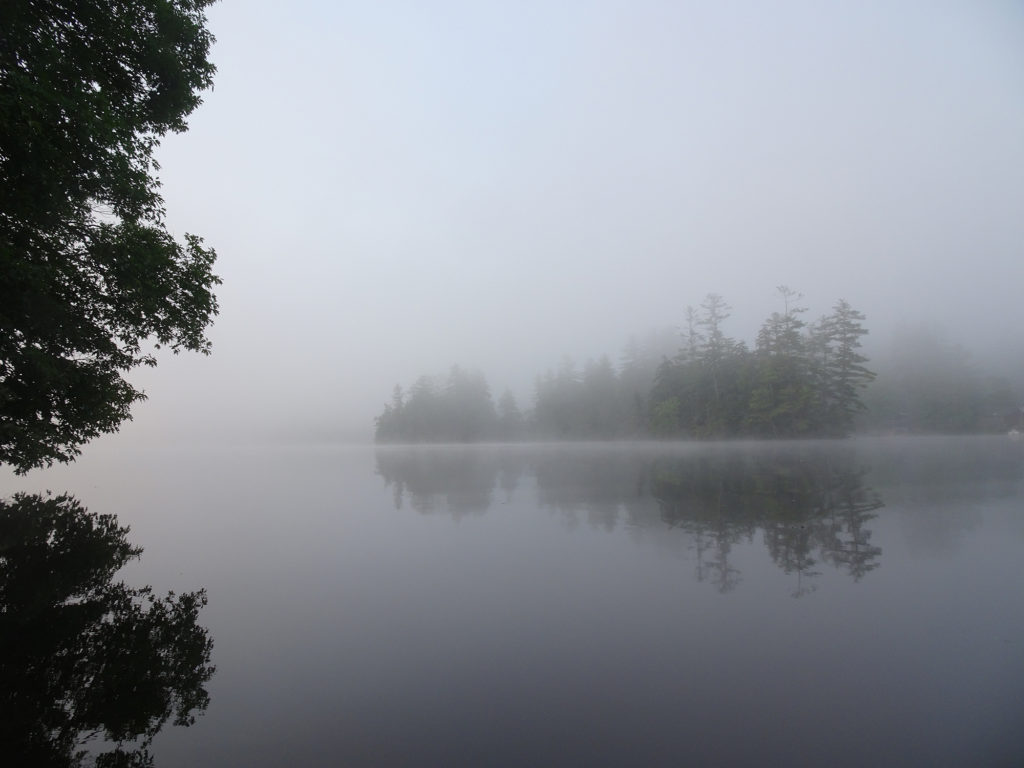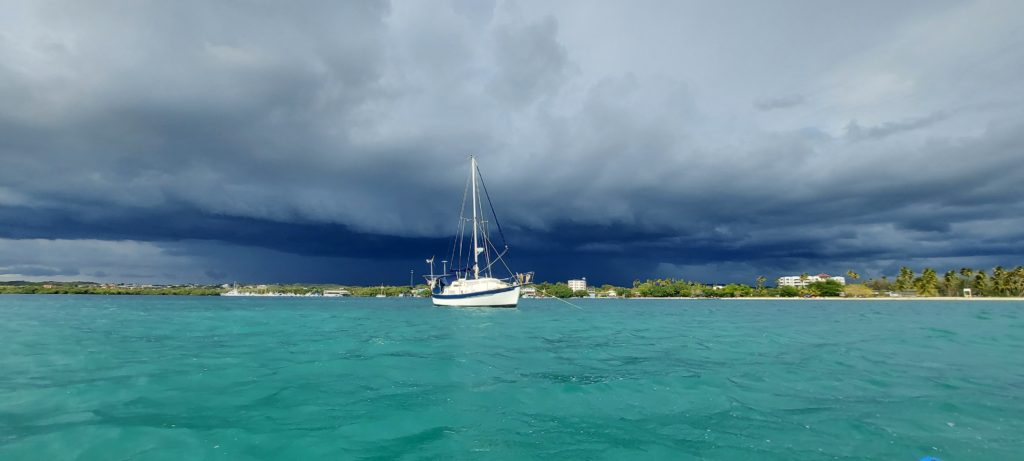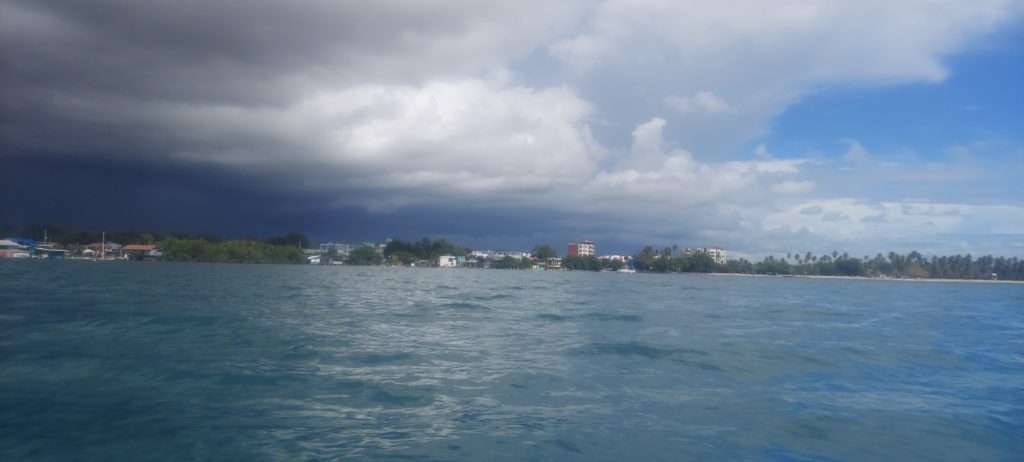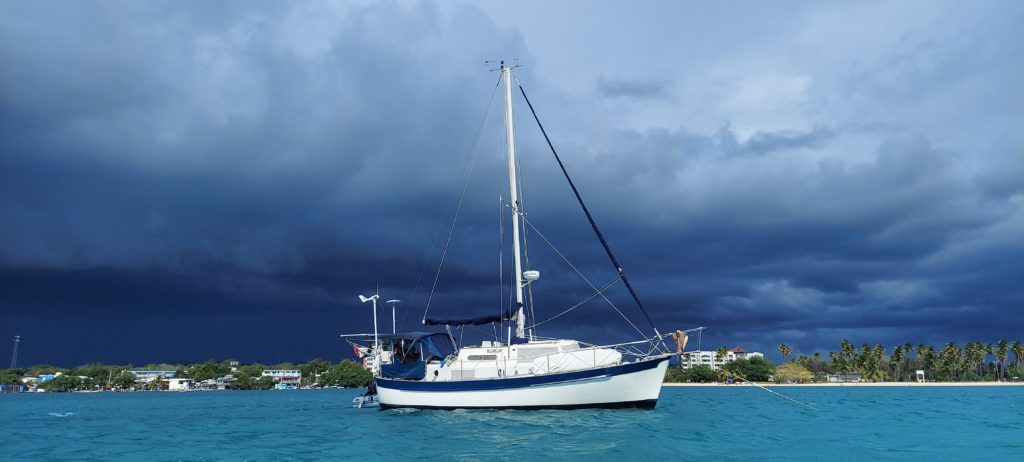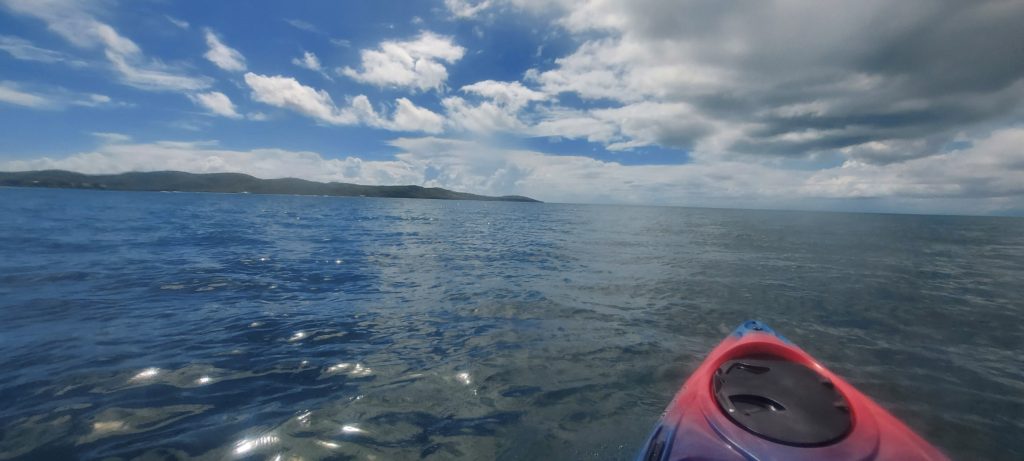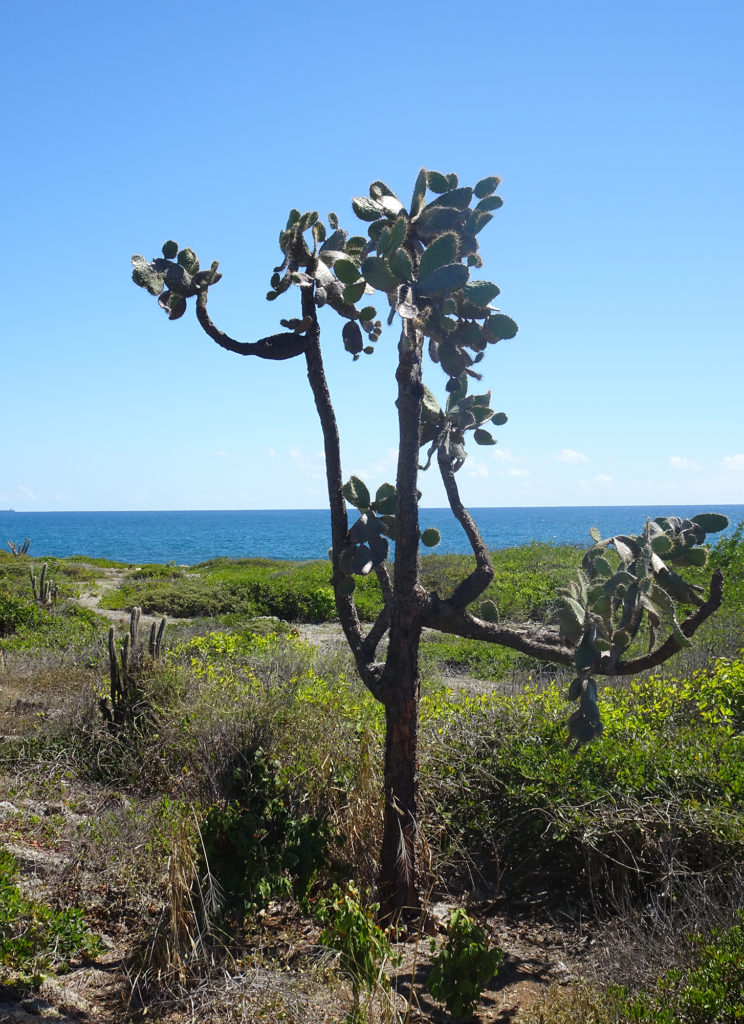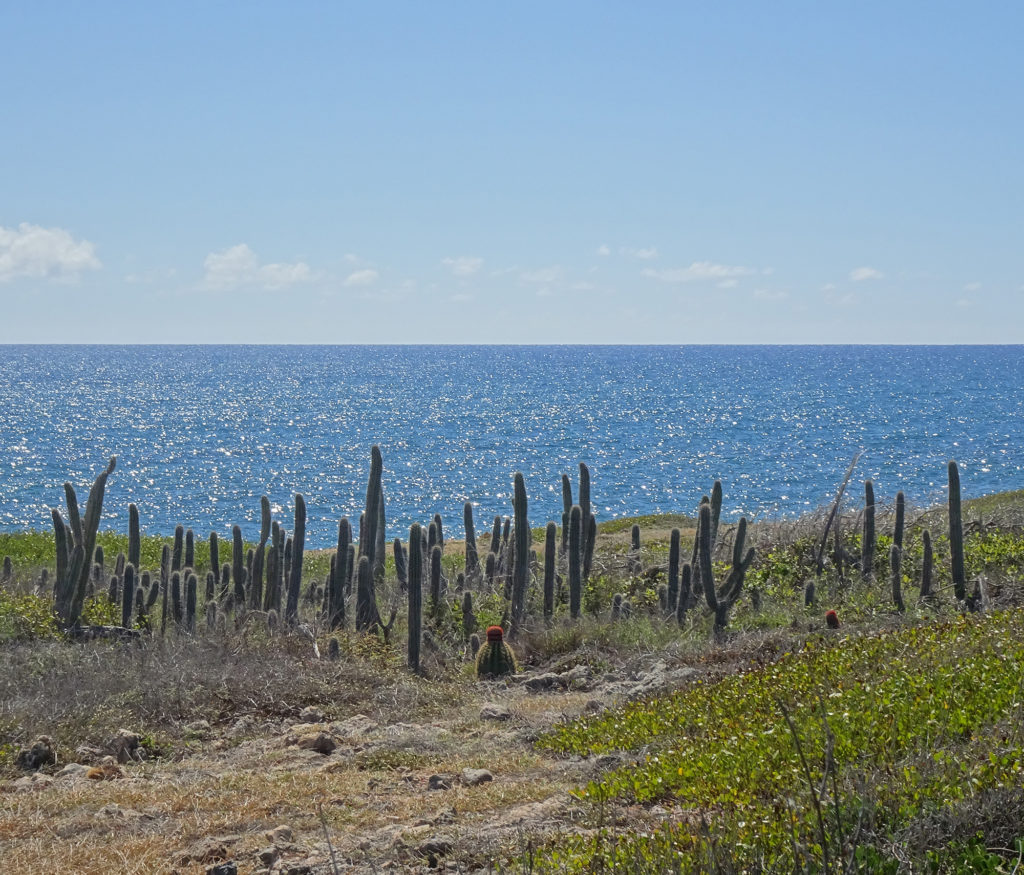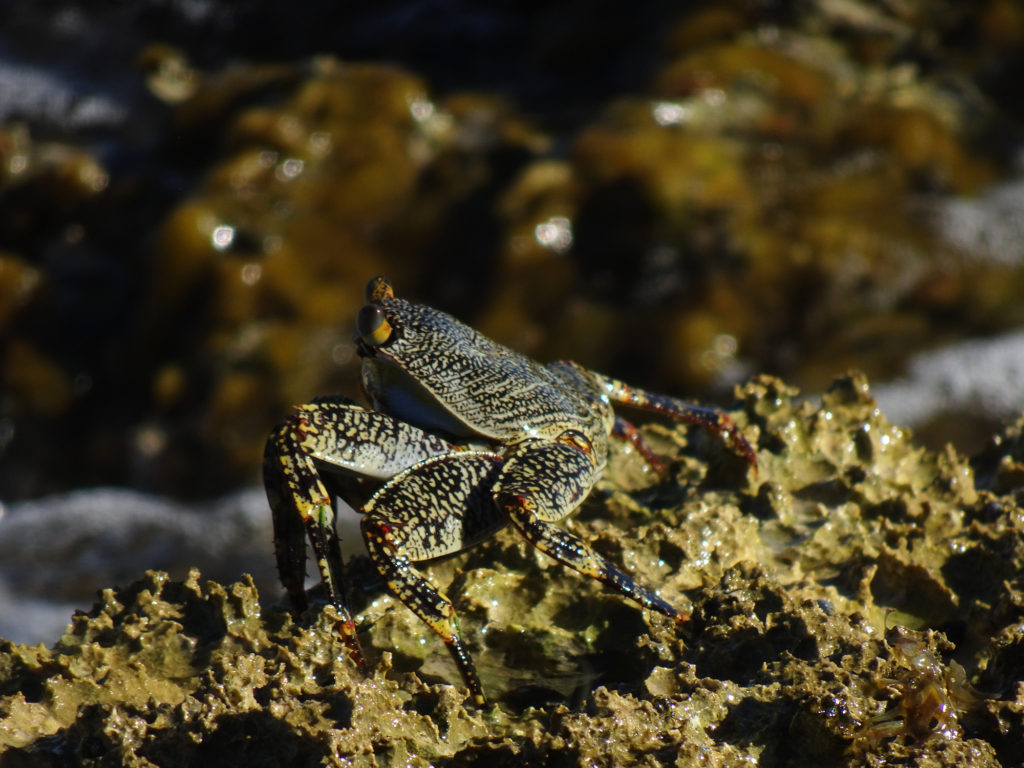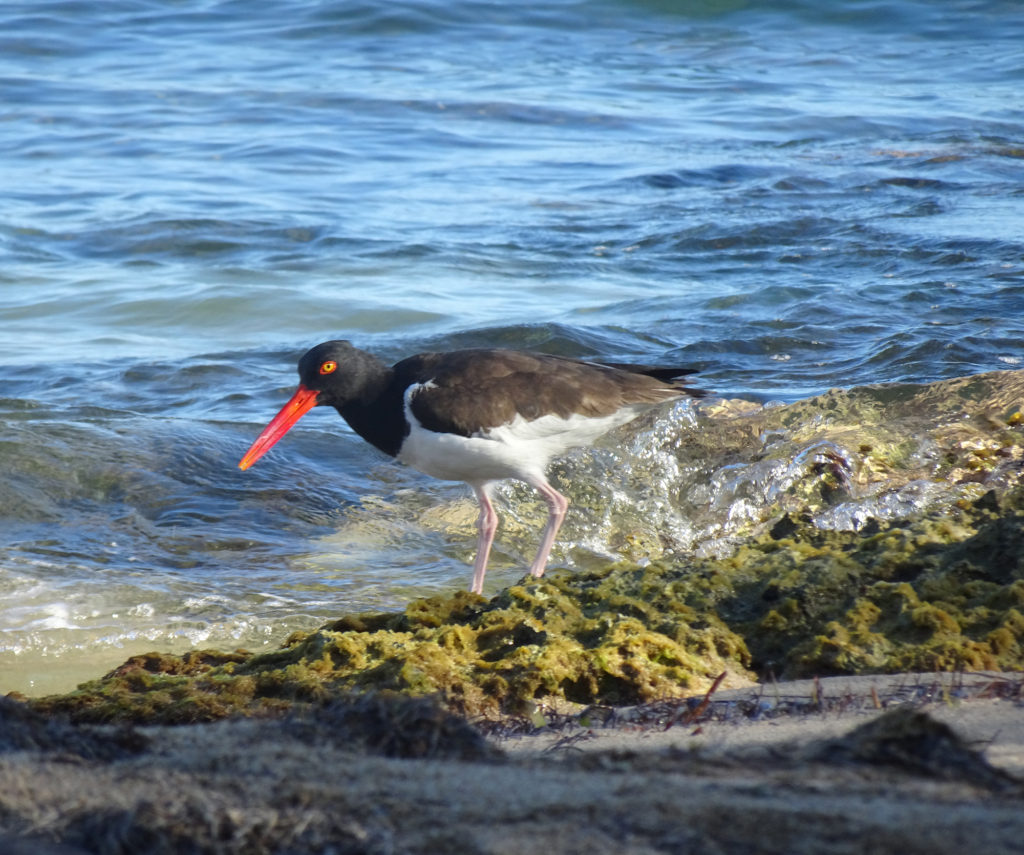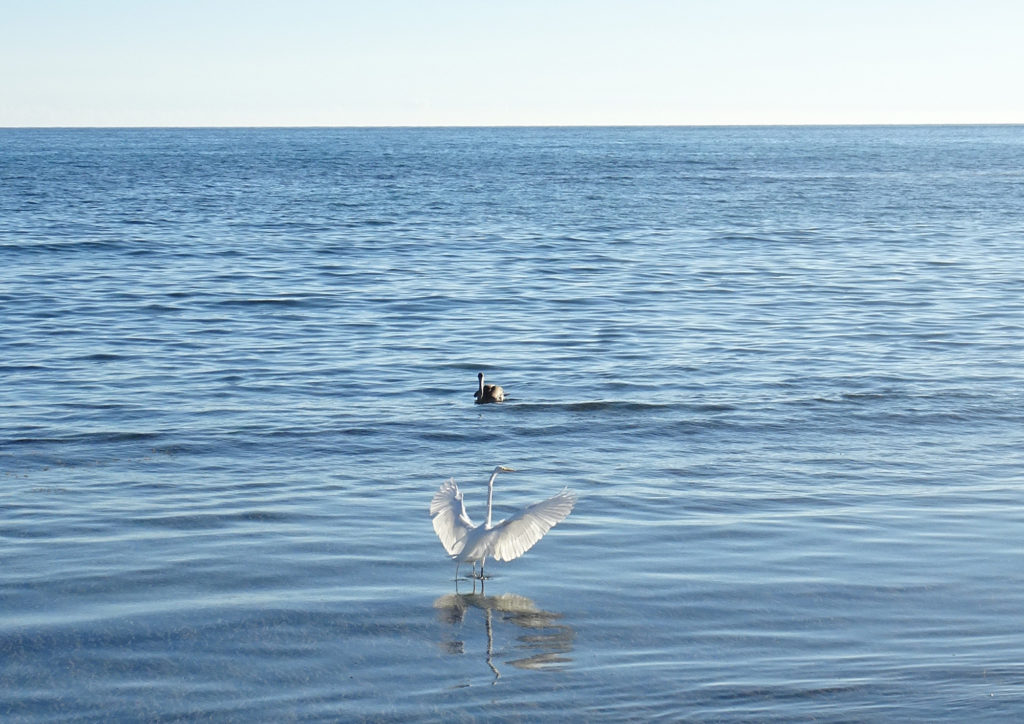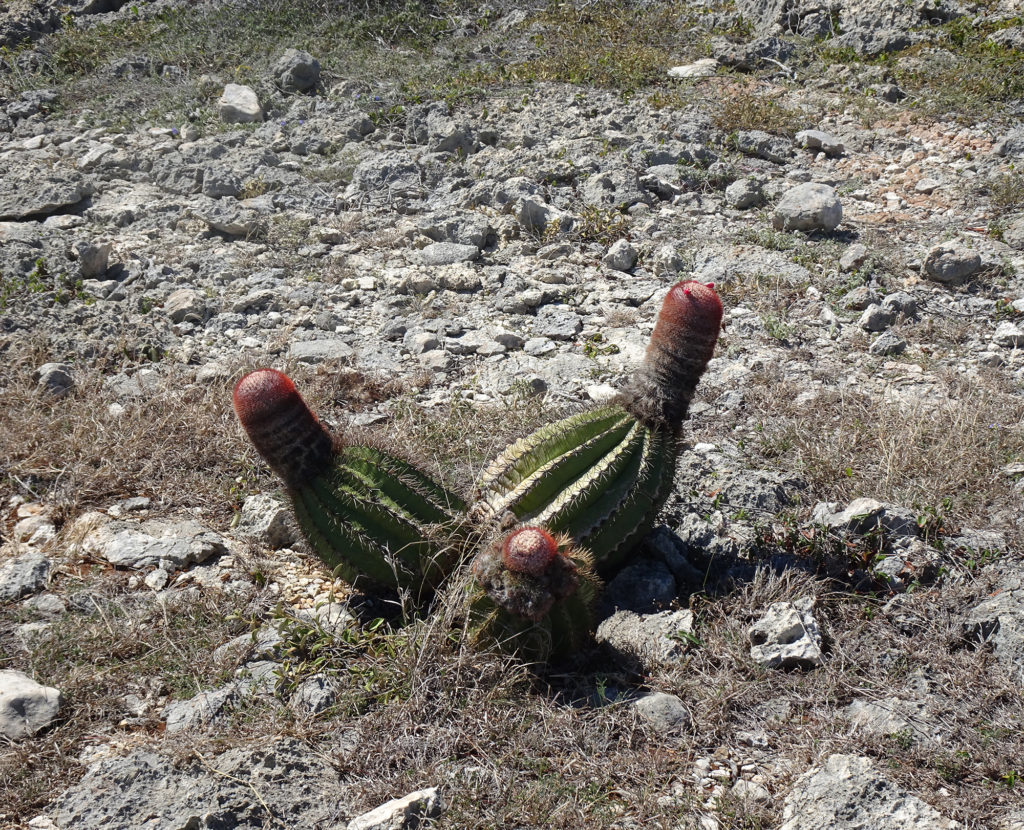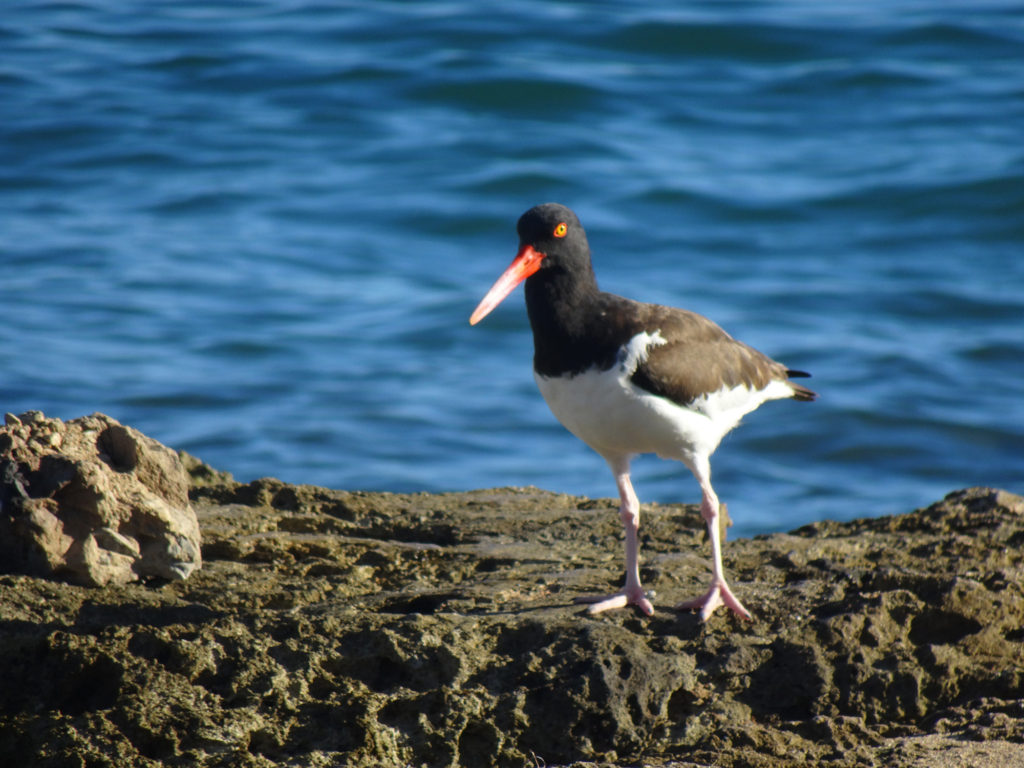Part 1: Transportation
Traveling in retirement is not all sweetness and light, despite what Messy Suitcase’s social media might suggest. We post photos from beautiful beaches and interesting places, but usually don’t share the logistics of how we got there. Or how we ran from the beach to the car because of a sudden unexpected downpour. Or about the fact that I am currently nursing a broken rib from tripping on a root and falling during a hike. There are plenty of obstacles and inconveniences to our traveling retirement that we grapple with daily, just like there were when we still worked.
We decided it was time to share a few, to give our lifestyle some balance, in this new series, Trouble in Paradise. In Part 1, we focus on transportation.
Flying
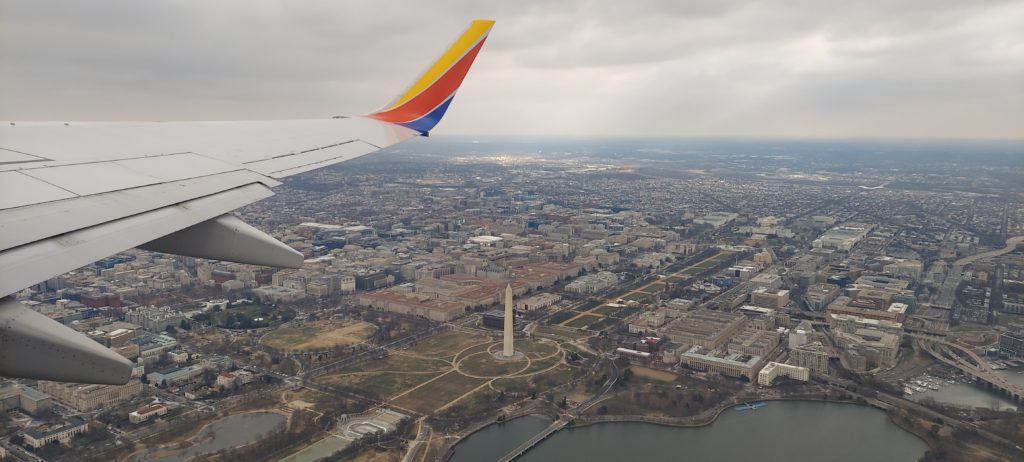
Air transportation is an unavoidable hassle if you’re going to live a traveling life. As soon as we arrive in a place, we have to start planning how and when we are going to get to the next one. We fly almost exclusively on Southwest Airlines right now, because we have thousands of airline miles and a Companion Pass good through the end of 2022. This helps keep our retirement life affordable. But it’s not always convenient, especially in the time of COVID.
For example, in January we booked a flight back to the United States from Puerto Rico for May 3, 2022. Last week, Southwest changed it so egregiously that the second leg was the day before the first, a physical impossibility. It took hours to fix this, including long telephone wait times, until they finally fixed the glitchy website so we could change the flight online. Then, two days later, they changed the flight again! We were originally going to arrive in DC at 8 PM. At this point, it’s 10:15 PM. I can’t wait to see what happens next (she said sarcastically).
Traveling during COVID times means securing the right kind of COVID-19 tests (as specified by the airline or the government of the place you’re entering), getting them administered correctly, with results returned in the specified time frame, filling out all airline COVID forms, making sure we have the safest masks to protect us, and choosing seats near the back of the plane (the safest part).
Packing
Fitting everything you need for three or four months of life into your luggage is difficult as well, especially if your lifestyle includes snorkeling and other athletic pursuits. Alas, my bike doesn’t fit in my suitcase, but I pack bike shorts and a helmet for when I am able to rent a bike. My tennis shoes fit, and just one tennis outfit, but I have to rent a racket at the club where I play. And speaking of shoes, while I am no Carrie Bradshaw, I cannot travel for months on end without all of my favorite Aetrex sandals! As well as running shoes. And hiking shoes. And Keens for the beach. It adds up.
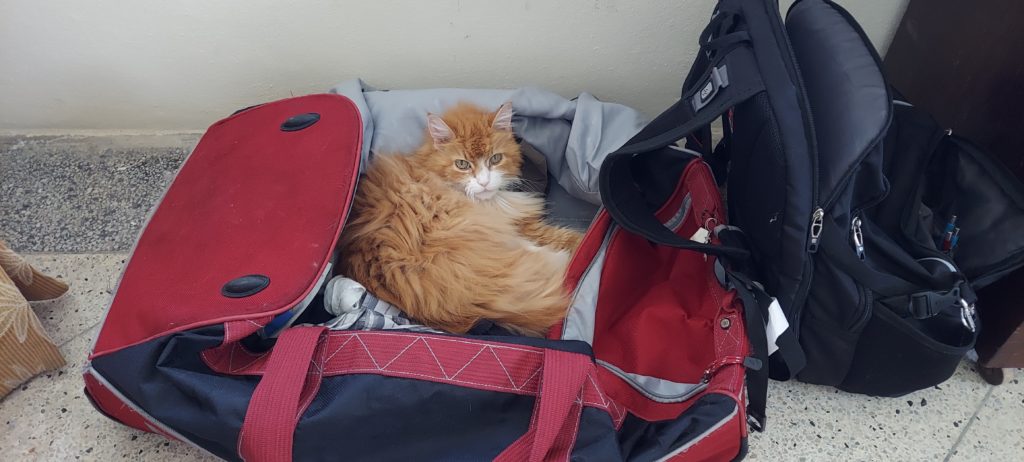
And then there’s the TRX home workout equipment, and a yoga mat, for staying strong and flexible, even while on the road. There’s snorkel gear. There’s the cat’s stuff, toys and litter box, bowls, and food. There’s jewelry. And my computer and tablet. And chargers. Sweaters and pants for cool evenings. bathing suits and goggles. Vitamins and medication. Toiletries. A hair drier.
I think you get the picture. We pack as light as possible, but it’s still a lot of stuff.
Getting Around
When we were living in Mexico, we drove our covered Toyota Tacoma down from the United States, after retrofitting the back latches of the cap to secure our possessions. We would then park where we were living, and rely as much as possible on public transit or Uber.
Public transit can really simplify life, but first, it complicates it, because you have to learn how it works in every city. How much does a ride cost? Bus or subway? Do you get a ticket? Pay cash? Exact change? A Metrocard? An app on your phone? Where are the stops or stations? What are the hours? What about transfers? Safety? How do you get from Point A to Point B? There’s a trip planning app called Moovit that really helps with this. Google Maps also helps chart a public transit route.
Uber is another great resource – better than cabs, in our opinion, because it’s more secure, and you know before the car arrives what it will cost to take you to your destination, and many drivers are happy to share their recommendations for restaurants, neighborhoods to visit and local experiences.
But we often need to rent a car. It’s a huge expense, and finding one that doesn’t break the bank when you are staying for months at a time is really hard. Last year, we found a deal on Enterprise after searching for weeks. Then, when we arrived in Puerto Rico, they told us we would have to bring the car back to San Juan International Airport every month to renew it. Since we were traveling to the east end of the island, that was a huge inconvenience. So on the renewal day, we spent an afternoon searching for an Enterprise local to our lodging, had that worker call San Juan, and got the car extended – we hoped.
A couple of weeks later, we found a $150 ticket on the car for expired registration. They had given us a car for three months without making sure the registration would last the duration! Bob got pulled over again the following week for the same issue, but was able to talk his way out of a ticket. We spent the last few weeks dodging police traffic stops so that we wouldn’t get another ticket. We got Enterprise to cover the cost of the ticket, in the end, though I thought they might blame us because we had not brought the car to San Juan in person after a month as instructed.
Damage and Destruction
We took that first car, a Ford Focus I believe, on a rutted dirt road to a deserted beach and managed to loosen the front left quarter panel, then spent the next two months pushing it back in place daily. The car was a very low rider, and every bump in the road scraped that damned quarter panel. (We noticed that most cars had the same problem; roads in Puerto Rico can be very bad.) In the end, there was an insurance claim on the car, which was covered by a combination of our USAA Auto Insurance and the coverage provided by American Express. Still, a hassle!
We are currently renting from Avis at a low(ish) rate I secured through Priceline. The first car they gave us had a nonworking cigarette lighter, which we needed to power our GPS. (We had discovered there are dead spots in the mountains and will no longer travel without the GPS. See Packing for why this is an inconvenient solution.) We took the car back immediately and got upgraded to the only other car on the lot, a Hyundai Tucson SUV, which is actually way better for Puerto Rican driving.
But … five weeks into our stay this time, Bob looked at the front wheel and saw this:
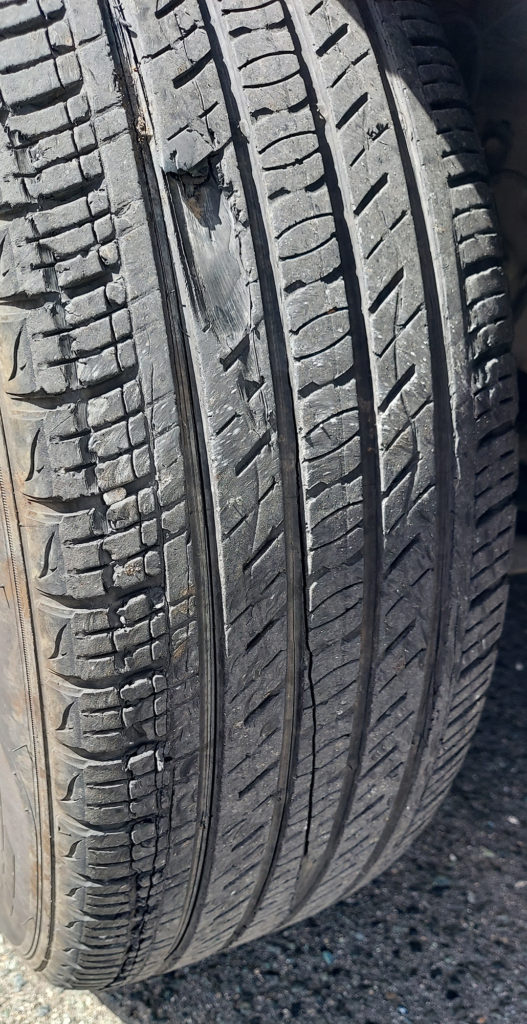
Holy shit! We were driving on a grossly defective tire that looked like it could explode catastrophically at any time! We called Avis Roadside Assistance in Puerto Rico. Busy signal. FOR TWO DAYS. We called the local Avis, at Aguadilla Airport, 20 minutes away. Non-stop ringing, or busy signal. FOR TWO DAYS. We called Avis in the United States. They connected us to US Roadside Assistance, who told us to call PR Roadside Assistance. I sent an email to Avis. They apologized for any inconvenience – four days later – told us to call PR Roadside Assistance. I lost all my hair pulling it out in frustration.
In the end, we just drove to the damned airport, where of course, the solitary Avis employee was not coming in for another hour. We went out to lunch, returned, and a miracle happened. The man at the desk made a phone call, gave us instructions to a gomera (tire place), and the tire was changed before we had time to finish piña coladas at a bar down the road.
Speaking of Tickets
We found a ticket on our car again last week when we returned to it after a day at the beach. I knew the registration wasn’t expired – it was the first thing I had checked. Puerto Rican traffic tickets are almost impossible to decipher, but I finally figured out that we had parked facing the wrong direction, and had to pay $50. It would be knocked down to $35 if we paid within 2 weeks.
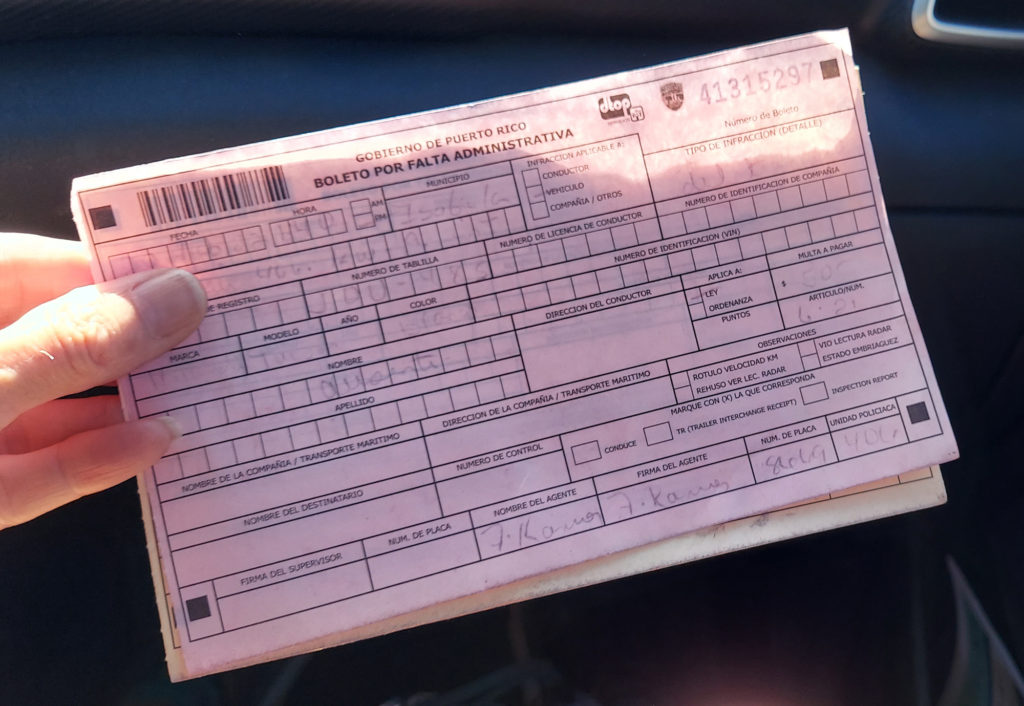
But how to pay? There was no website, no address to mail. Off to Mr. Google! I found guidance here – and learned that you have to pay in person – isn’t this 2022, people? – at a place called CESCO (the Motor Vehicles Department). There’s a CESCO Office near the Avis place in Aguadilla, so we went there after getting our new tire. The CESCO person sent us to another office, Hacienda (Finance department), at the other end of the same strip mall, where we joined a socially-distanced outdoor line of people holding boletos (tickets).
While Bob waited, I bought breakfast pastries at the bakery next store, and on the way back noticed a barcode on the Hacienda door that would have allowed us to schedule our appointment in advance and not wait in line. It would have been nice to know about that! But we were there already, in line, and hoped we were close enough to the front to get in before the office closed for the day at 3:30 PM (although the website said it closed at 5.) We were fortunate to be the last people allowed in! And both the door monitor and the woman behind the desk (one of only two people working inside) were extremely helpful friendly and spoke English. The woman did warn us to make sure we provided the car rental agency with evidence this ticket was paid so they wouldn’t try to charge us for it again.
Meanwhile, Back in the States
Since we flew to PR from Washington National Airport, our Toyota Tacoma is parked in an underground garage in Crystal City, VA, for what I considered a very reasonable monthly rate of $130. I did a lot of research to find this low rate at this convenient location. Imagine my surprise when I received an email from SpotHero last month, two weeks after I parked the car there, telling me the rate was going up to $200 – a 50% increase – beginning the very next month! Obviously, there is no way to move this car out of the garage until we return. We just have to suck it up. And though I wrote a scathing email to SpotHero, I received no response and have no recourse but to pay until we take the car out on May 4.
Up next …


